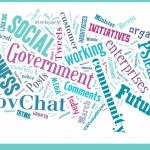January 7, 2015
Start Building a Culture of Content Creation & Sharing
For the past several years social media has been a buzzword swamp with public service and digital leaders chasing one shiny object after another like dogs chasing their tails. Social Listening, Digital Marketing, all types of Engagement, Advocacy and Social Marketing to name but a few.
More recently joining W2P pioneers in the chase have been other public sector leaders lured by the promise of a brave new world empowered by social media enabled government and collaboration. Or maybe it’s just their fear of losing control and/or being left behind.
As sustainable social applications begin to crawl their way out of the swamp of social media disillusionment, platforms facilitating the creation and sharing of content across social channels may be poised to lead the way.
Interestingly enough utilizing a unified platform for operationalizing two of the above words, Advocacy and Engagement may just hold the key to unlocking greater value from content creation and social sharing.
Both Advocacy and Engagement have one thing in common that’s critical for any true social success and that’s PEOPLE!
Businesses, brands and governments today are aiming to truly engage people to become advocates and these people can be citizens, stakeholders, influencers and of course even public service employees.
Co-ordinating, encouraging and facilitating a culture of creation and social sharing of all forms of content by these four groups has the potential to generate a multiplier effect and a renaissance in the combined development and sharing of ideas.
A technology platform to support these efforts is a key prerequisite building block, but ultimately much more will be required for governments to succeed. True cultural change embraced by most employees and many citizens & relevant stakeholders and influencers in the country will require leading both a ‘Top Down’ and ‘Bottom Up’ approach, as well as adopting both ‘Inside Out’ and ‘Outside In’ methods for facilitating distributed creation and flows of content and ideas.
Like any successful organizational development or change initiative, internal efforts need to be embraced, lead and supported by government, public service leaders and frontline public service employees. Active leadership from the highest levels in government and the public service is critical to demonstrate commitment and lead by example, ‘Walking the Talk’ through the creation and sharing of content. For the shift to a culture of content creation and sharing to take root the ‘Bottom Up’ groundswell of content creation and social sharing must be facilitated, encouraged and your people rewarded for these efforts. The ultimate goal is for these aligned ‘Bottom Up’ and ‘Top Down’ initiatives to meet in the middle cementing this as a permanent part of public service culture moving forward.
Likewise ‘Inside Out’ and ‘Outside In’ bi-directional content creation and sharing initiatives can cultivate a similar resulting flow and synergy between governments, the public service, citizens, stakeholders and potential influencers. Again rewards and recognition for those committed to active participation in content creation and sharing should be a key consideration in your planning.
Very few individual initiatives can effectively address so many goals, in this case simultaneously addressing Citizen, Stakeholder, Influencer and Public Service Employee Engagement while at the same time harnessing joint content and creation to energize your efforts. The power of creating a culture of content by synchronizing and synergizing the voices of Employees, Citizens, Stakeholders and Influencers as true advocates and ambassadors together writing new chapters as they tell the story of a country, jointly creating and advancing national purpose and culture.
Jeff Ashcroft
Image: 123RF

 A bold statement perhaps, but one borne out of long standing frustration with the slow if not stagnant forward movement towards implementing more sustainable supply chains.
A bold statement perhaps, but one borne out of long standing frustration with the slow if not stagnant forward movement towards implementing more sustainable supply chains. A few years back the Government of Canada introduced the role of Chief Technology Officer or CTO, which ultimately resulted in the formation of Shared Services Canada.
A few years back the Government of Canada introduced the role of Chief Technology Officer or CTO, which ultimately resulted in the formation of Shared Services Canada. 

